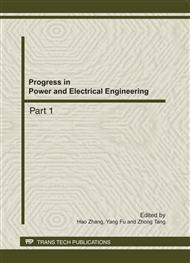p.350
p.355
p.361
p.365
p.369
p.376
p.380
p.385
p.389
Combustion and Heat Transfer in 300MW Oxy-Fired CFBB
Abstract:
A combustion and heat transfer model in oxy-fired CFBB was set. Particle diameter, voidage of the bed ,etc, was analyzed with 30%, 50%, and 70% oxygen. Take a 300MW CFBB for example, the heat transfer characteristics in furnace were numerical simulated. In the sparse zone, heat transfer coefficient is proportional to oxygen concentration at the same voidage of the bed; under the same operation condition, the heat transfer coefficient in CFB increases with the voidage of the bed at first, then it decreases. It was found the heat transfer capability decrease due to the higher concentration of oxygen. It is necessary to set an external heat exchanger to keep a normal combustion
Info:
Periodical:
Pages:
369-375
Citation:
Online since:
October 2011
Authors:
Keywords:
Price:
Сopyright:
© 2012 Trans Tech Publications Ltd. All Rights Reserved
Share:
Citation:


